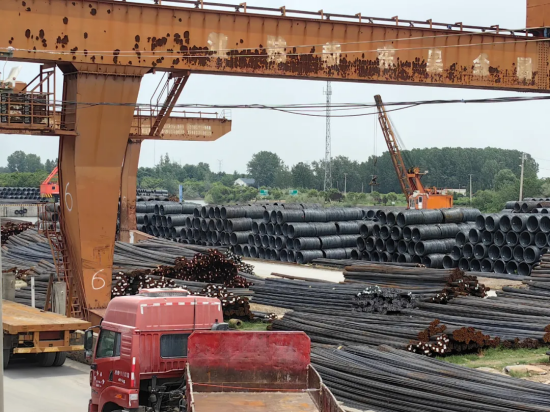【Steel】"Broke Through 3, Entered the 2s"! Historic Moment – Where Is the Bottom?

Graphite electrodes are key materials for EAF steelmaking, mainly used for arc heating. With excellent conductivity and high-temperature resistance, they are crucial for improving EAF production efficiency and quality.
【Steel】"Broke Through 3, Entered the 2s"! Historic Moment – Where Is the Bottom for Steel Prices?
On May 27, the main rebar futures contract fell to RMB 2,975/ton, marking a new low since September 2024 and officially entering the "2" era. At the same time, Tangshan Q235 billet prices dropped to RMB 2,940/ton, and the Platts iron ore index fell below USD 99/ton — over 10% lower than at the beginning of the year.
This drop is part of a broader trend. In the third week of May, the domestic steel composite price index declined 1.12% week-on-week. Prices for all eight major steel products fell, with rebar down 1.68%. Hot-rolled coil and cold-rolled sheet prices also hit new year-to-date lows.
The breach of RMB 3,000/ton reflects deeper structural issues within the steel industry. According to Chen Leiming, Executive Vice President and Secretary-General of the China Metal Materials Circulation Association, the core problem is the clear mismatch between output and demand. The steel industry must undergo painful capacity cuts and output control to overcome the current crisis and achieve sustainable development.
As of 2025, at least 12 small- and medium-sized mills have announced shutdowns for maintenance, while 3 firms have begun bankruptcy restructuring. Large steel enterprises are accelerating investments in low-carbon technologies such as hydrogen metallurgy and electric arc furnace steelmaking, with single projects exceeding RMB 5 billion in green transformation spending.

Historically, rebar futures have broken below RMB 3,000/ton three times:
(1) August 22, 2014 – the first drop below RMB 3,000/ton, followed by a decline to RMB 1,618/ton by early 2015 — nearly 50% lower in just 16 months.
(2) September 2024 – an intraday breach quickly reversed due to policy stimulus. The drop was mainly driven by U.S. election uncertainty and new rebar standards raising concerns about old stock liquidation.
(3) May 26, 2025 – driven more by international dynamics. Trump's renewed tariff threats worsened bearish sentiment. The market is now in a "double whammy" of weak expectations and weak reality — the so-called "Davis Double Kill."
In 2025, China's commodity market faces a downward price cycle. In 2024, the typical pattern was: "decline → policy-driven rebound → reality-driven drop." Over time, policy optimism weakened as each rebound was beaten back by poor data. Market sentiment has become numb, with traders no longer reacting even to major policy changes such as "Two Sessions" or central bank rate cuts.
Currently, there are two conflicting expectations: one is that China will unleash strong stimulus to support prices; the other is that the Fed will cut rates to release liquidity. But the dominant market stance is disbelief in either.
Analysts expect the steel market to continue bottoming out in the final week of May. But looking ahead to June, persistent mismatches in finished products could intensify, pressuring prices further. Raw materials may see relatively limited downside, which could compress industry margins. Additionally, southern China's rainy season may sharply weaken end-user demand, posing a risk of faster price declines.
The breach of RMB 3,000/ton is not just about numbers — it marks a turning point in the industry's development logic. With the era of "volume-price expansion" ending, steelmakers must find new drivers in green transformation, high-end manufacturing, and global strategies. In the short term, caution is warranted against prices testing RMB 2,700–2,800/ton. But over the longer term, oversold rebounds may emerge, driven by policy catalysts like urban village renovation and increased special bond issuance. This “long winter” may yet give birth to a more resilient steel industry.
Feel free to contact us anytime for more information about the EAF Steel market. Our team is dedicated to providing you with in-depth insights and customized assistance based on your needs. Whether you have questions about product specifications, market trends, or pricing, we are here to help.
No related results found








0 Replies